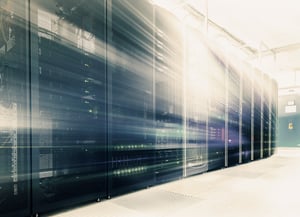 There’s a a change afoot in enterprise data centers. It centers around the best storage media for all those bits and bytes of application data. As opposed to the loyal, hard disk drive (HDD) that toils, spins and spins, enterprise storage is being transformed by the use of persistent flash memory for primary workloads.
There’s a a change afoot in enterprise data centers. It centers around the best storage media for all those bits and bytes of application data. As opposed to the loyal, hard disk drive (HDD) that toils, spins and spins, enterprise storage is being transformed by the use of persistent flash memory for primary workloads.
That means the HDD spinning disk— along with its inherent slow IOPS, higher latencies and reputation as a common bottleneck to application performance—is now getting a run for its money. In its place? Ultra-fast, non-spinning, flashbased storage that can process application I/O requests in even the sub-millisecond-range.
And better application performance isn’t flash storage’s only “Plus.” Flash also brings significant decreases in power consumption over its HDD counterpart, dramatic reductions in rack and floor space, and features like data compression and deduplication that significantly maximize a healthy flash storage investment. Then there’s the decreasing cost per gigabyte of enterprise flash storage which makes it more accessible for many organizations.
At WEI, we are often first to extol such benefits flash storage can bring to data center environments. Yet, with all the good flash storage can do, we have also seen a few misconceptions that can derail an otherwise solid flash storage investment.
With that in mind, we present 3 cautions that can help you avoid costly mistakes with flash storage in your own data center.
CAUTION #1:
BEWARE OF SHIFTING BOTTLENECKS
Just as the world’s early cars1 soon required a more modern network of roads and freeways to make it faster to travel from Point A to Point B, flash storage may now require a closer look at what’s needed to speed other parts of the application and technology stack.
Don’t be surprised if the introduction of ultra-fast flash storage now sheds light on the relative slowness of other interlocking parts in the data center. With the disk drive no longer the bottleneck to application performance, bottlenecks may still occur anywhere from the storage controller, to the network, to the CPU. Inefficient application coding can even be a bottleneck to peak flash performance.
In an interesting blog2 by Nutanix’ Michael Webster, Webster makes the case that most networks are too slow to reach peak flash storage performance. While prevailing flash vendor wisdom might exhort you to just “Buy It and Performance Will Follow,” organizations would be wise to investigate what other data center refinements are needed to get the most from flash. Otherwise, they could end up driving a Ferrari with a VW engine. While it has a nice, fast shell, it can’t reach top speeds. Achieving peak flash performance may well require a longer, planned overhaul of key data center components.
CAUTION #2:
AVOID THE TRAP OF THE “LATEST-AND-GREATEST”
Flash storage vendors are quick to point out how much better their latest gear is from that of their competitors. And, they may well be right. But, does every organization require the best, the fastest, and the latest model of flash storage? Just like buying the latest iPhone might be enticing for bragging rights alone, do you really need all the new bells and whistles of the latest model?
When it comes to flash storage, as mentioned in our first caution, can your organization’s current data center infrastructure even keep up with the latest iteration of flash? As Webster’s blog points out, current flash technology will only get faster as NVMe and 3D Xpoint flash technologies become more mainstream over the next few years.
If your network and data center has trouble keeping up with the current flavors of flash, how will it keep up with the next flash technology boost? For that matter, how will vendors of servers and storage chassis keep up with the pace of flash innovation? The truth is that the vendor ecosystem to accommodate the latest flash technology with sufficient network bandwidth, sufficient NICs and ports may well have to play catch up to flash first.
Advice for data centers wanting to incorporate flash now and reap its benefits: Be prepared to wait for vendors to catch up to the edge of flash technology. In the meantime, investigate ways to successfully incorporate flash storage “tiers” for your organization’s hot, Tier 1 data sets. This might take the form of either all-flash storage arrays, serverside flash, or, even, hybrid storage arrays.
CAUTION #3:
DON’T FORGET TO BALANCE COST VS. PERFORMANCE
Don’t be fooled by “flashy” presentations. Common data center wisdom regarding IT investment still prevails. IT often has a limited budget. Unless your business is involved in high-end trading, the addition of the latest, most expensive all-flash storage array may still be a tough sell.
WEI is often asked to help IT organizations to assess and quantify the relative merits they will gain from large IT investments vs. the initial cost to deploy them. In the case of flash storage, the market is crowded. There are many iterations of flash to consider. Some may offer a better compromise of cost while still bringing the performance boost needed for key applications.
There’s also still a place for spinning HDDs (often in the areas of backup and recovery). Ask how WEI experts can help your organization make the right choices with flash storage.
A FINAL NOTE ON FLASH. . .
These cautions may help balance the hype of flash against its reality in the data center. Is flash storage still a game changer in many applications? Undoubtedly. Is flash the future of data center storage? Yes.
But, as you move to incorporate flash storage media into your own data center, keep in mind the following: There’s more than one way to boost application performance. Flash is just one of them.
Sources:
1. “History of Cars,” by Chris Woodford, updated Nov. 13, 2016, Explain That Stuff!, http://www.explainthatstuff.com/historyofcars.html.
2. “Your Network is Too Slow for Flash and What to Do About It,” by Michael Webster, June 5, 2016, http://longwhiteclouds.com/2016/06/05/your-network-is-tooslow-for-flash-and-what-to-do-about-it/.
3. See Reference Note #1.
About WEI
WEI is an innovative, full service, customer-centric IT solutions provider.
Why WEI? We go further.
At WEI, we’re passionate about solving your technology problems and helping you drive your desired business outcomes. We believe in challenging the status quo and thinking differently. There are a lot of companies that can take today’s technology and create a great IT solution for you. But we do more. We go further. And we have the customer, vendor and industry awards to prove it. WEI is a premier technology partner, who always puts our customers first while providing the most innovative solutions for over 30 years.


